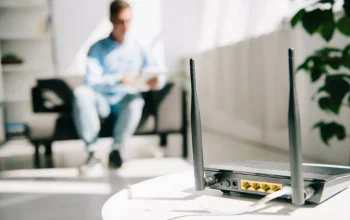Ever since mobile phones came into our hands, we only see photography purists lugging around cameras. And many smartphones are fewer and fewer phones and more cameras.
However, your mobile may have a great capacity to take an excellent photo, but there is something essential to obtain an impressive result: knowing how to take the photo.
Tips For Taking Good Photos With Your Mobile
- Always shoot as many photos as you need, don’t settle for one.
- The lens must always be clean (use a chamois or a soft part of your clothing).
- Remove the cover if it bothers you to take the shot, as it can sneak into the image or cause reflections.
- Take advantage of daylight, or failing that, the foreground must have enough artificial light. Avoid yellow light bulbs. Direct sunlight usually marks contrast (you must assess if it is what you want).
- Know your hardware and your software. On the manufacturer’s website, you can see the characteristics of your camera. Being aware of the limitations of your camera allows you to stay ahead of problems.
- Automatic or manual? Manual mode involves (at least) knowing some photography terminology, but it’s pretty limited on mobile, so why not give it a try? In any case, always activate the automatic mode if you need to capture a moment in which you want the camera to respond quickly.
- Take care of contrast and backlight. They can be exciting resources if you want, but they can also make you discard the photo due to excesses or defects.
- Avoid using the flash. It produces too harsh a light with sharp shadows, so shoot with a second only if absolutely necessary. Try turning on as many lights as possible, moving your protagonist around, or forcing the ISO into your phone’s settings.
- Secure your photo by holding down the button to create bursts. It may be a bit annoying later to review many images, but there are some that you like.
- Night or low-light photos are better with a tripod. If you don’t have one, try to lean on something so that your hand moves as little as possible.
- The grid option is your friend. Composition is a crucial aspect of a good photograph, and almost all mobiles allow you to activate this option to give stability to the scene.
- Take advantage of perspective. Head-on photos are fine, but playing with perspective can make for exciting pictures.
- You don’t have to center everything. If you move the center of the image, you will surely get a more dynamic and original result.
- Don’t zoom. You will only lose quality. It is preferable to take the stock photo and edit it with software.
- In selfies… We know that it is complicated when it comes to framing since we can only go as far as our arm can reach, but you can play with the angle from which you shoot to take a somewhat different photo.
- With or without a filter? It depends. They can spoil the image or create effects that are too forced. It may be better to edit the image manually.
- Try photography apps (we’ll have to do a post on this). Mobile phones usually have an app adapted to the characteristics of the smartphone, but it is worth trying others to get the most out of the image.
- Create without fear. Experiment, play with perspectives, abuse noise, touch all the values on your mobile, throw yourself on the ground… Ultimately, your best photo may be the one you had no hope for.
Advantages and Disadvantages of Using the Mobile to Take Pictures
Surely you can think of many advantages of making your mobile your camera. Of course, its size is ideal for working with it; we always carry it with us (we can always capture the image we want), it is straightforward to use, and it is not very invasive or threatening (celebrities rarely notice that they are being photographed with mobile ) and are always in continuous improvement.
However, it also has its disadvantages. Mobile prices go up if they have a high-quality camera and the most affordable mobiles have a small sensor that limits image quality.
As you can see, you don’t need the most expensive mobile on the market to take a photo worthy of a professional. Your eye and these tips will make a difference.
And no matter how important it is to take the photo that tells the story you wanted. Great photography professionals say that taking a good photograph requires only two things: patience and spontaneity.




